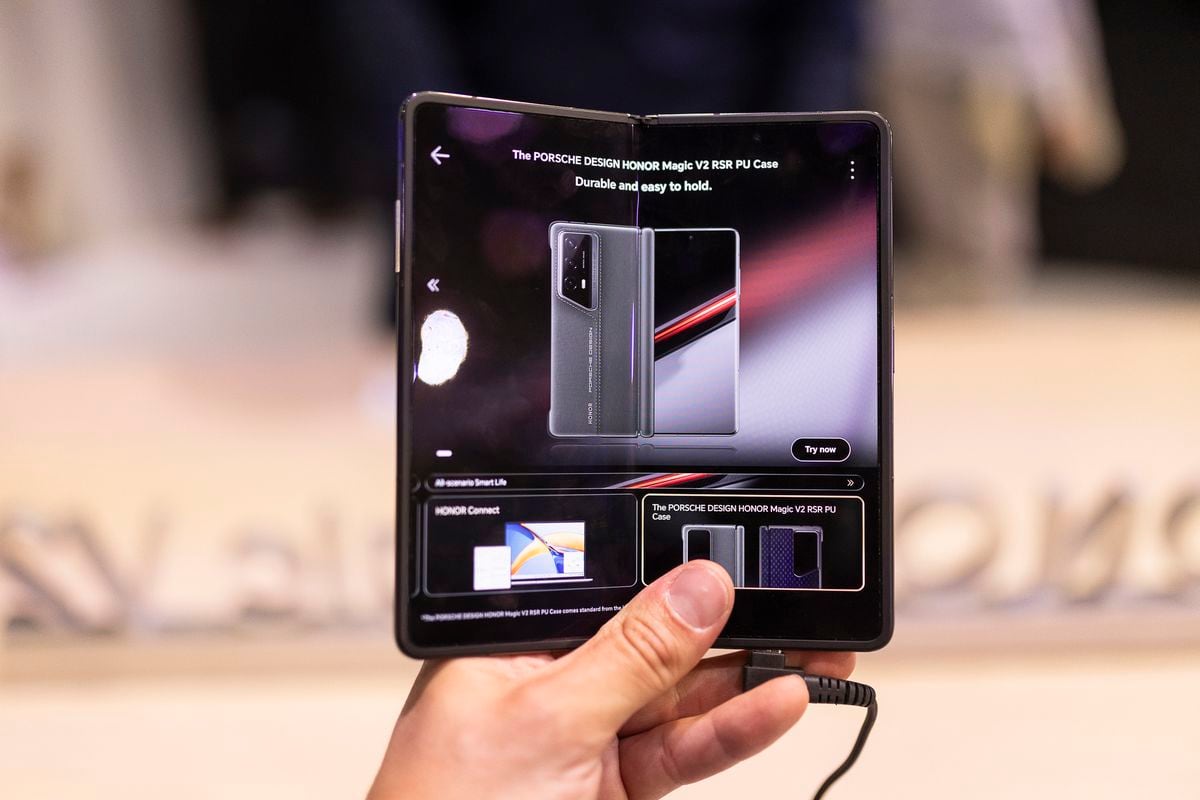Enlarge image
Current smartphones: Still a lot of potential
Photo: c't
They are compact cameras, sat navs and dictaphones in one, as well as MP3 players, appointment planners and notepads, game consoles for on the go and omniscient reference books: smartphones have more and more other devices in one.
The time of the big technical leaps between the model generations is over, even cheap models can do the most important tasks and are usually easily sufficient for everyday use.
But there is still a lot of potential in smartphones that manufacturers want to unlock by constantly refining their devices and making them better.
Companies are not tackling technical developments without reason: the markets are considered to be largely saturated, which is why the battle for customers is all the harder.
The fact that newcomers have a hard time is an experience that the brands of the Chinese BBK Group, among others, had to make this year: Oppo and Vivo invest large sums as sponsors of football events - Oppo in the Champions League, Vivo in the world - and European Championship - but are hardly moving in terms of market share.
Realme, another BBK brand, is also struggling to gain a foothold in Germany.
Oppo is also struggling with a huge ball on the leg, because a patent dispute with Nokia has meant that Oppo smartphones have not been allowed to be sold or advertised in Germany since August.
At the time this article went to press, there was still no agreement in the multi-billion dollar dispute between the two companies.
eye-catcher
Meanwhile, another company has caused quite a stir with its very first smartphone, and without any technical records at all: The Nothing Phone (1) has made it, with an individual design, the distinctive light-emitting diodes that send encoded messages, and to get a foot in the door of a sometimes quite annoying but ultimately successful marketing campaign.
Even Telekom has included the eye-catching phone (1), actually a middle-class Android smartphone that is too expensive for the hardware used, in its own range.
This is remarkable and at least a clear indication that there are still aspects with which a new name can stand out from the crowd.
By the way: The strong man at Nothing is no stranger to the technology industry.
Carl Pei, founder and former boss of OnePlus, has managed to push a newcomer into the market for the second time with Nothing.
It remains to be seen whether this success will last.
Everyday foldables
A lot has happened with folding smartphones, but there is a catch here: interested buyers in Europe cannot get hold of some of the most exciting models on the official sales channels, the devices are only sold in Asia.
These foldables, which can only be ordered from import dealers with a certain risk, include the Vivo X Fold+, the Xiaomi Mix Fold 2 or the Oppo Find X. Motorola also initially launched the new Razr in China, and it has taken some time but later followed in Germany.
Although Motorola belongs to the Chinese Lenovo group, it hardly holds any relevant market shares there, unlike in the USA and Europe.
The fact that some manufacturers do not bring their smartphones onto the market in Germany, or only do so very late, means that Samsung is virtually unrivaled when it comes to foldables in Germany.
A pleasant situation for the Koreans, who only had to do gentle model maintenance with the fourth generation of Fold and Flip.
The folding smartphones look confusingly similar to their predecessors, but thanks to larger batteries and higher energy efficiency, they last longer and are getting closer and closer to conventional smartphones in this respect.
Even if most manufacturers do not yet offer their folding smartphones in this country, the foldables have created a niche for themselves.
They have become suitable for everyday use and have developed from an experiment into an established product category that has its right to exist.
However, two big names apparently still have doubts about this: Apple and Google continue to avoid foldables, and even in 2022 fans did not hear any official announcement about a Pixel Fold or a foldable iPhone.
Apple cancels the SIM card
Meanwhile, Apple's iPhone 14 may look almost indistinguishable from its predecessor, but it is breaking new ground elsewhere.
As an alternative to classic mobile phone communication, it can also contact satellites.
This function, which Huawei also announced this year, is intended to make it possible to make emergency calls in the dead zone.
Although the vast majority of people will never need it, satellite radio is always technically exciting.
Apple is making a cut for the time being only in the USA and Canada: With the iPhone 14, Apple has eliminated the SIM card slot and is relying entirely on the programmable eSIM.
Sure, without a SIM drawer you save space in the narrow housing and costs, but you sacrifice the flexibility to quickly buy a local SIM abroad and plug it into the cell phone.
It's easier than installing an eSIM or transferring it from one device to another.
Apple's argument that the SIM slot takes up too much space turns out to be false when the iPhone 14 is disassembled: instead of the SIM drawer, the American model has a non-functioning black block made of plastic.
Restricting the eSIM as the only option is a radical change of course that will probably take a long time to be picked up by other smartphone manufacturers - if at all.









